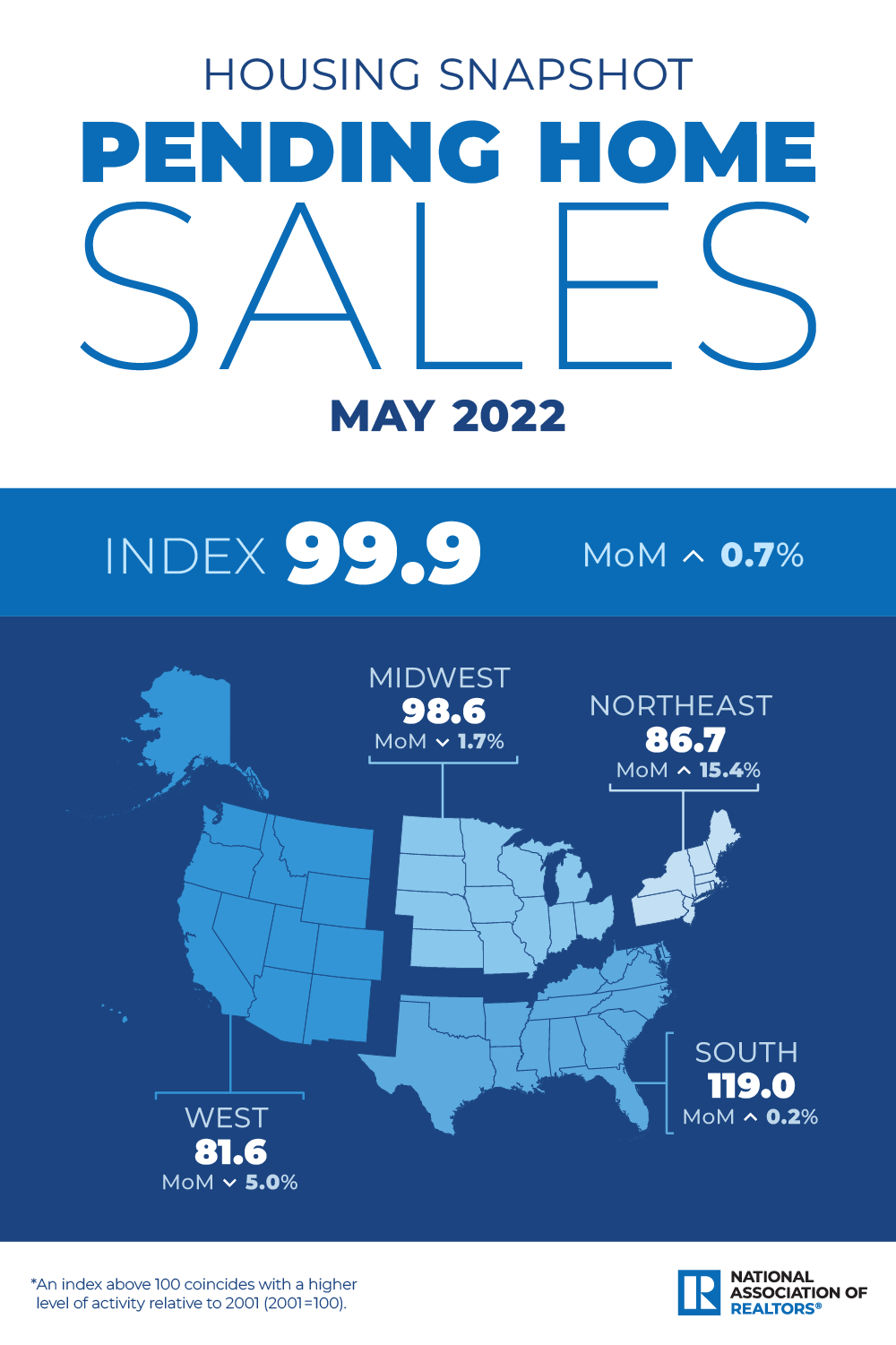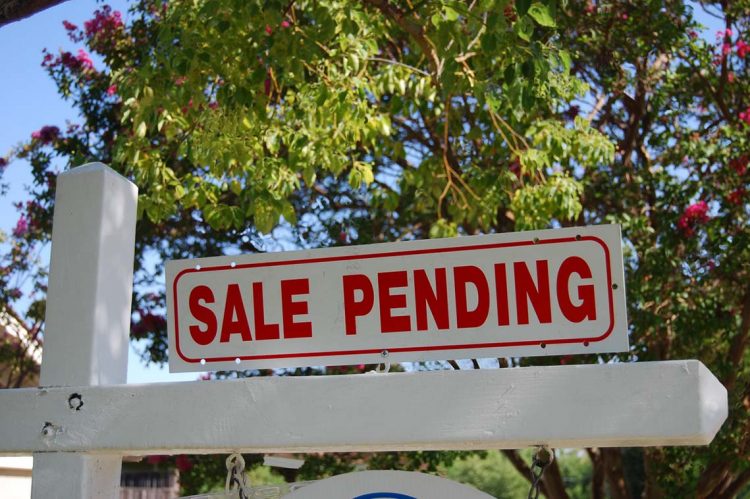As the 2022 housing market continues its transition from the frenzy of the past year, recent data from the National Association of REALTORS® (NAR) shows that contract signings, which have been on a downward trend since the start of the year, experienced a slight rebound in May.
NAR’s Pending Home Sales Index (PHSI), a forward-looking indicator of home sales based on contract signings, crept up 0.7% last month, climbing to 99.9 and breaking from a six-month spree of declines. Despite the slight increase in May, pending home sales were down 13.6% year-over-year.
Regional activity was a mixed bag as the Northeast and South saw monthly increases in contract signings while the West and Midwest experienced decreases in pending sales. Each region also experienced a decline in annual contract signings.
NAR experts indicated that the regional variance in monthly contract signings was predicated on the differing degrees of home price and affordability challenges experienced in each area—a product of the persisting supply and demand imbalance in the market.
According to NAR, at the median single-family home price, and with a 10% down payment, the monthly mortgage payment has increased by nearly $800 since the beginning of the year as mortgage rates have climbed 2.5 percentage points since January.
While the modest monthly increase in contract signings offers a slight reprieve from consistent drops in sales this year, NAR experts indicate that the market is shifting under rising mortgage rates and elevated home prices.

Regional Breakdown:
Northeast
+15.4% MoM — Now 86.7 PHSI
-11.9% YoY
Midwest
-1.7% MoM — 98.6 PHSI
-8.8% YoY
South
+0.2% MoM — 119 PHSI
-13.8% YoY
West
-5% MoM — 81.6 PHSI
-19.8% YoY
The takeaway:
“Despite the small gain in pending sales from the prior month, the housing market is clearly undergoing a transition,” said NAR Chief Economist Lawrence Yun. “Contract signings are down sizably from a year ago because of much higher mortgage rates.
“Trying to balance the housing market by choking off demand via higher mortgage rates is damaging to consumers and the economy. The better way to balance the market is through increased supply, which also helps the broader economy,” he added.
“The vast majority of homeowners are enjoying huge wealth gains and are not under financial stress with their home as a result of having locked into historically low interest rates or because they are not carrying a mortgage. However, in this present market, potential homebuyers are challenged and thus may attempt to mitigate the rising cost of ownership by opting for a five-year adjustable-rate mortgage or by widening their geographic search area to more affordable regions,” said Yun.
“The largest decline in contract activity was observed in the West region, where homes are the most expensive. This further indicates the growing need to increase supply to tame home price growth and improve the chances of ownership for potential homebuyers,” Yun concluded.
“For many homebuyers, the median listing price of $447,000 combined with mortgage rates above 5% brought fresh affordability challenges,” said George Ratiu, Senior Economist & Manager of Economic Research at realtor.com®. “However, pending home sales were 13.6% below year-ago levels.
“At the midpoint of 2022, real estate markets are mirroring an economy reaching for its post-pandemic reality. The frenzied rush to find a home and lock in historically low interest rates seen during the past two-plus years has been relegated to the history books. With inflation taking a bigger bite out of consumers’ paychecks each month and the Federal Reserve fully engaged in cooling the heat on prices, Americans’ ability to borrow is being sharply curtailed. The result is softening housing demand, which comes at the same time as many homeowners are embracing the new normal and listing their homes for sale. In the process, housing markets are experiencing a familiar shift—with rising inventory and slowing sales, a growing share of homes lingers longer on listing portals, leading to price reductions. The return of these historical patterns is a welcome development for home shoppers who have been waiting for the window of buying opportunities to open wider,” Ratiu concluded.
For more information, please visit www.nar.realtor.












